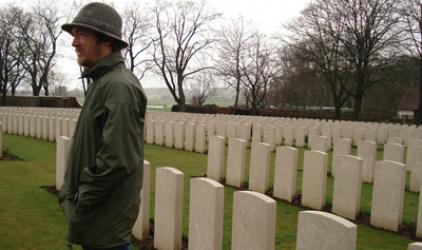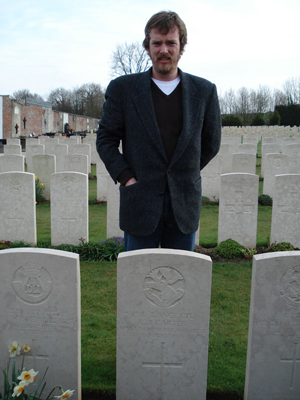Using Historical Thinking in the Classroom (Lindsay Gibson)

During my ten years as a high school social studies and history teacher in the Kelowna school district in British Columbia (SD #23), I worked on several projects that showed me the potential of history to deeply engage students in its study, yet I also saw how students became disinterested when it was presented as little more than facts-to-be-remembered. In a specially-designed class, my students at Kelowna Secondary School spent a year in the archives of the Kelowna Museum, the Okanagan Military Museum and the genealogy section of the Okanagan Regional Library writing the biographies of forgotten WWI and WWII soldiers, and then travelled to the battlefields of France and Belgium to trace their journey and find their graves. In another project I collaborated with six other social studies teachers to develop and implement a unit of study on the Interwar period in Canadian history that embedded the six historical thinking concepts that constitute the Historical Thinking Project. This project made me aware of the infinite possibilities that historical thinking presented for the study of history, and alerted me to the power of teachers collaborating and deliberating on the design and implementation of a unit that addresses a commonly identified problem.
Throughout my teaching career I asked myself questions about the bigger issues in history education: What are the purposes of teaching history? What do we want students to know and understand about history by the end of their mandatory school career? How can history be taught to engage students? What can be done to improve the teaching of history in our schools? In the attempt to answer these questions I pursued further education. After completing my MA thesis on critical thinking and teaching history at UBC Okanagan, I enrolled in the PhD program in Curriculum and Pedagogy at UBC in Vancouver under the supervision of Dr. Penney Clark and Dr. Peter Seixas.
Throughout the past year I have been completing my PhD coursework, teaching pre-service students their social studies methods course, and working on a variety of projects with The Critical Thinking Consortium (TC2) and THEN/HiER. In the fall of 2009 I was contracted by TC2 as the principal author of The Governor’s Letters website for which I wrote four critical challenges designed to engage students in historical thinking based on the analysis of evidence, and three tool supplement activities designed to help students analyze primary documents. In the spring of 2010 I began work with THEN/HiER to develop a collection of online archives, websites and databases of primary sources on significant topics in Canadian history designed to help student-teachers, teachers, social studies educators and historians locate significant online collections of primary sources for a wide range of topics in Canadian history.

In the next year I will be completing my PhD coursework, writing my comprehensive exams, and developing my dissertation proposal which will utilize Design-Based Research to focus on the development of teachers’ and students’ thinking about the historical thinking concept of ethical judgments.
Lindsay standing over the grave of his great-uncle Lance-Corporal LJ Carter of the Royal Newfoundland Regiment who died at Beaumont-Hamel (Battle of the Somme) on July 1, 1916

